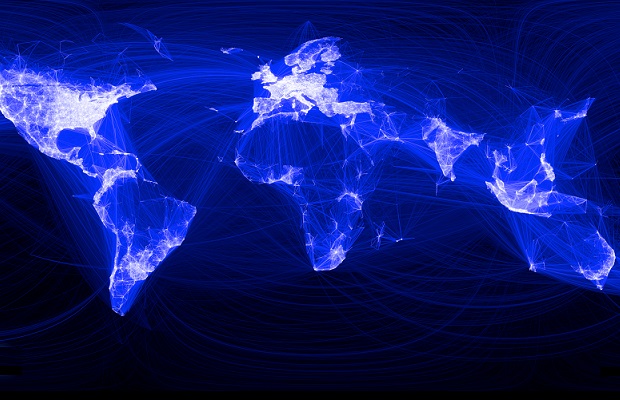Asia makes up 51% of the webs users, with Europe and US claiming 19 and 10% respectively, according to this year’s global internet trends report from Mary Meeker.
Mary Meeker’s ‘Internet Trends’ report has become a major milestone in the digital industry calendar, showing how much digital technology has influenced media and marketing trends.
Meeker, a partner at venture capital firm Kleiner, Perkins, Caufield and Byers, has become renowned for her data presentations which are often used as an industry touchstone. This year her Internet Trends Report was viewed over a million times within four days of being published.
Key highlights from the slides are listed below:
Internet growth
Back in 1995, there were 35 million internet users worldwide, representing about 0.6% of the total population at the time.
Two decades later, in 2014, 2.8 billion users represent 39% of the population. Asia contributes 51% of users, Europe claims 19%, the US has 10%, and the rest of the world makes up the remaining 21%. The growth of internet usage is still strong, as is the number of new users, but it is slowing compared to the previous few years.
India now ahead of China for digital growth
India has 232 million Internet users, up 37% in the last year. It added 63 million users in 2014. Its growth curve mirrors that of the United States a few years ago, and China more recently. The top Android app is WeChat.
Advertising
TV ad spending (41%) is still ahead of online advertising (37%) in the US. Mobile advertising is growing strongly while internet advertising seems to be slowing down, according to Meeker.
Mobile users
The number of mobile phone users also exploded, growing from 80 million users in 1995 to 5.2 billion users in 2014. However, smartphone subscription growth is slowing. Mobile data traffic is slowing slightly, overall, but mobile video traffic is growing slowly and steadily since 2012.
Rise of chat apps
Six of the top 10 most used apps around the world are messaging apps. Messaging has become a platform not just for communications, but for commerce and computing. “Watch this space,” Meeker said.
Consumer behaviour
User-generated content is on the rise across mediums, whether text, audio, or video. Users age 12 to 24 years old are generally considered the trendsetters for platforms and content, with many focused heavily on mobile use and social media.
This expansion of the internet across new platforms does have some dire consequences. Cyber security risks are bigger and more complex than they have been in recent years, with mobile devices as one of the key drivers of this threat. Despite these new risks, Meeker said there is a security skills gap in the enterprise.
Drones
Sales of drones are up 170% year over year, and usage spans everything from disaster response to infrastructure inspection. In the U.S., despite regulatory hurdles, more than 400 companies have been approved to operate drones commercially.
Top countries for digital
China is the biggest internet market in terms of “sheer mass,” according to Meeker. Companies like Chinese tech giant Tencent are leading social while Melishuo and Mogujie are heading up social commerce. In addition, internet M&A and e-commerce are growing in China. Xiaomi is leading smartphone shipments in the country and spearheading part of the IoT revolution as well.
India could be on track to be the next big internet market. It’s growth is trending upwards for user penetration and could be improved by emerging catalyst companies. India currently has 232 million internet users growing at 37% year over year, making it the third biggest internet market. It tops the list in new user additions with 63 million new users in 2014. Mobile and e-commerce are the driving factors behind India’s internet use.
The top 10 internet companies in the listed by Meeker by market value:
1. Apple
2. Google
3. Alibaba
4. Facebook
5. Amazon
6. Tencent
7. eBay
8. Baidu
9. Priceline
10. Salesforce.com
